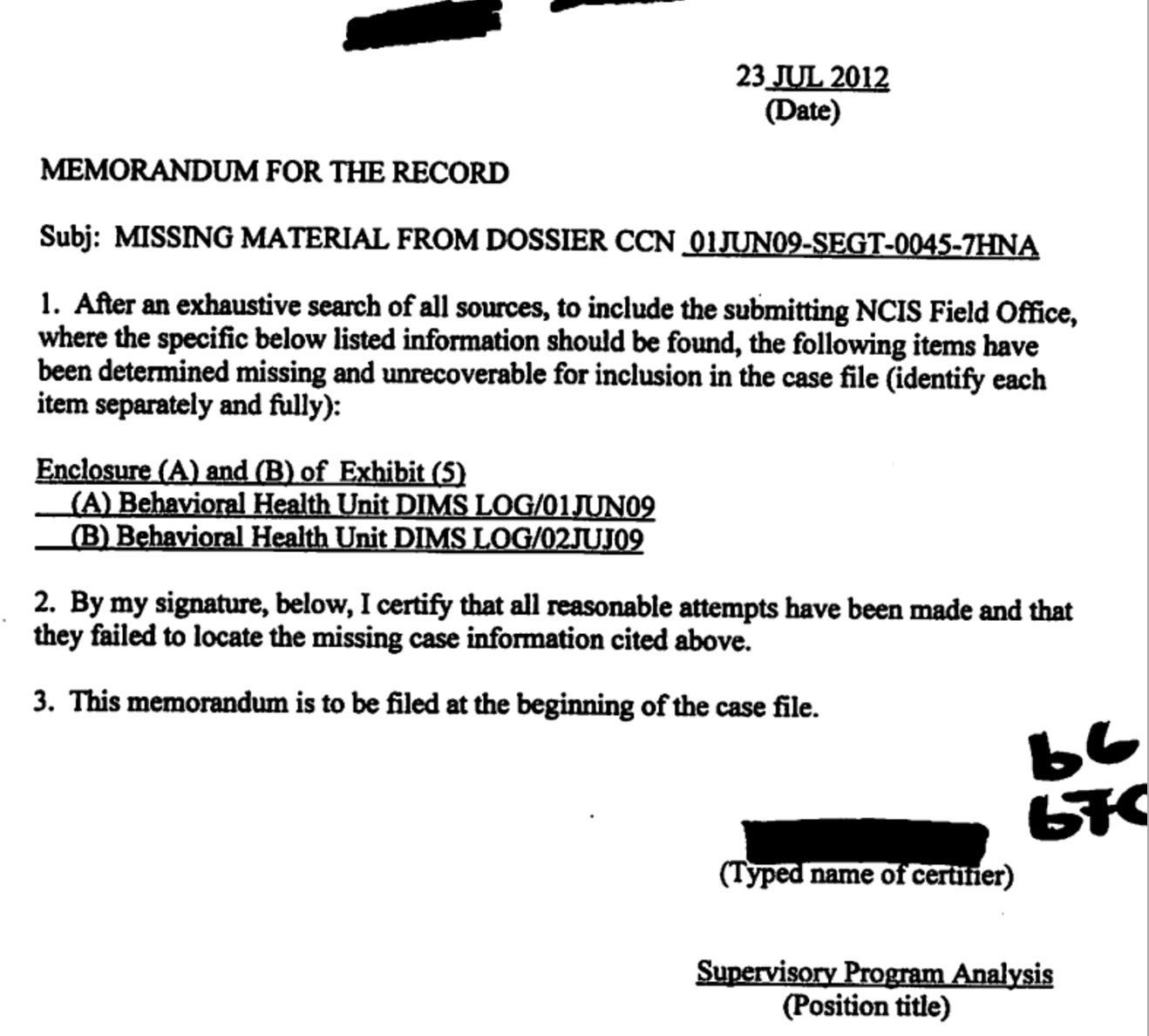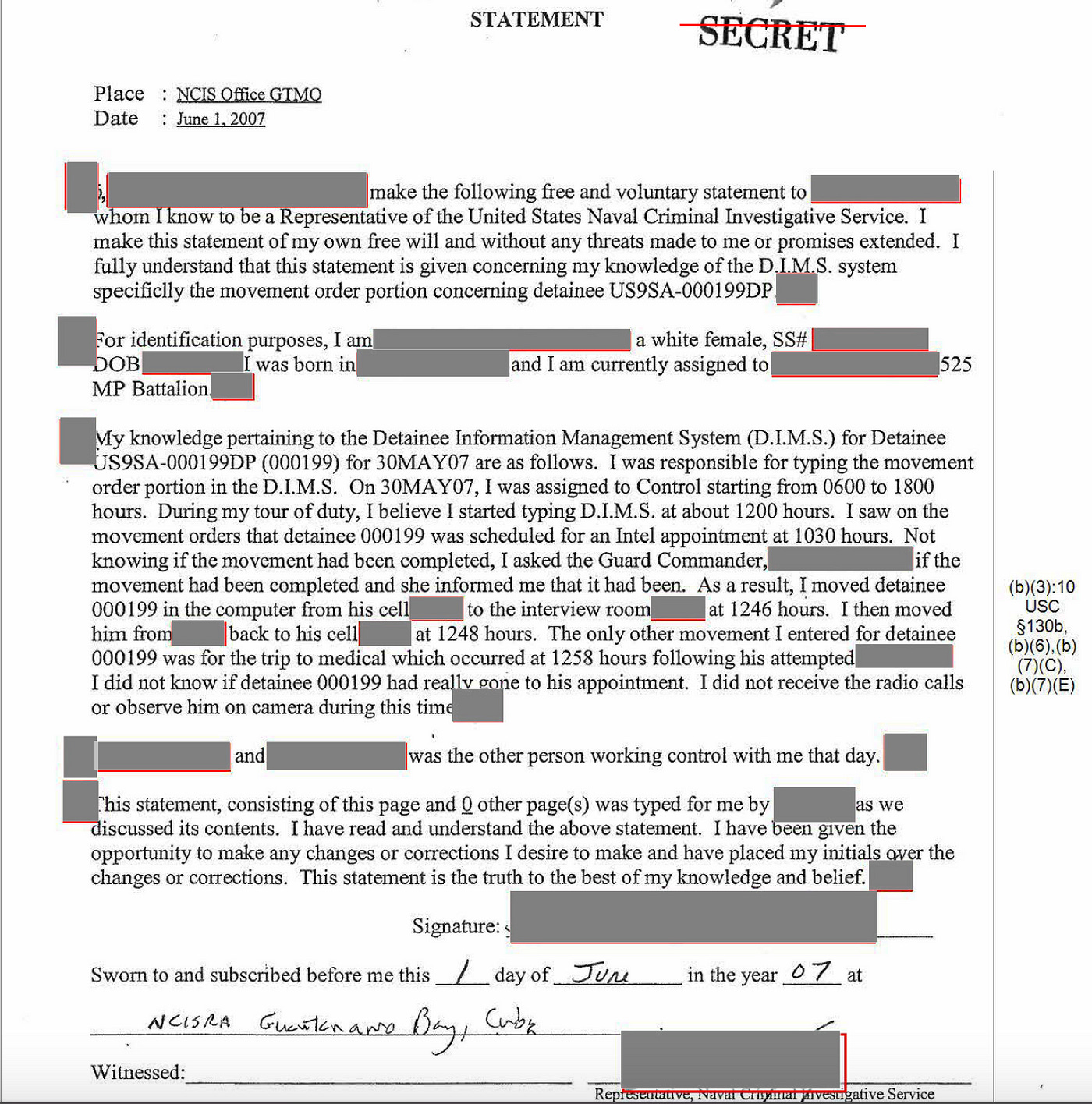Computer Tampering at Guantanamo Used to Halt Investigation into Detainee Deaths
It's been five years since I showed that Gitmo authorities falsified computer data, erased other data, all in an effort to hide the truth about torture & even murder, but press has totally ignored it
It’s been over 6 years since I wrote the article reposted here. It is being republished with only minor edits.
January 11, 2024 is the shameful 22nd anniversary of the opening of the Pentagon’s self-styled “battle lab on the War on Terror.” Guantanamo is a military prison meant to operate beyond the reach of the law. It was and is the site of experiments in torture, and home base for the unjust farce of the Military Commissions. It is still home to “forever prisoners,” former CIA torture victims, and “released” prisoners who have not been, or supposedly cannot be released. Altogether, there are thirty prisoners left at Guantanamo. Nine prisoners died at the Caribbean gulag, seven ostensibly by their own hand. But there’s plenty of evidence to doubt the truthfulness of what has been reported by government authorities, and then parroted mindlessly by nearly all the press. #CloseGuantanamo
An examination of documents related to a number of presumed suicides at Guantanamo over a six-year period reveals repeated tampering with the computer system that is supposed to monitor detainees at the Cuba-based U.S. military prison.
The recurrent tampering appears to represent a pattern of interference with investigations into the deaths of half a dozen Guantanamo prisoners. In one case, described in more detail further on, officials with the Joint Detention Group, Guantanamo’s guard force, apparently misrepresented computer operations to Navy investigators in an effort to stymie an investigation into irregularities that occurred.
Guantanamo’s Detainee Information Management System (DIMS) is a facility-wide computer system. According to a 2012 Army report, DIMS “is the primary tool used to track day-to-day information about detainees, and is made up of electronic entries regarding each detainee.” DIMS entries on each prisoner are supposed to be logged at the beginning of each guard shift, and at a minimum hourly thereafter.
Between 2006 and 2012, in almost every instance when a detainee was found dead at Guantanamo, computer logs that would have documented guard, medical official or detainee activities or locations either went missing, presented evidence that contradicted witness statements, or standard operating procedures (SOP) pertaining to their use were not followed.
Indeed, Army officials found that failure to follow numerous camp SOPs contributed to the death of Yemeni detainee Adnan Latif in 2012. More particularly, they lamented that failure to follow DIMS protocols meant they could not reliably ascertain the timeline of events surrounding his death.
The documentation of repeated problems with Guantanamo’s computer system was drawn from various Freedom of Information Act (FOIA) requests involving inquiries into the deaths of six different detainees, including documents from both the Naval Criminal Investigative Service (NCIS) and official Army investigations.
These various requests were made at different times by the ACLU, reporter Jason Leopold, and myself. The analysis here is mine alone.
Narrative inconsistencies related to failures or possible malfeasance surrounding DIMS operations are troubling, all the more so as suggestions to repopulate Guantanamo with supposed terror suspects are being floated by the Trump administration. President Trump himself is on the record as supporting a resumption of torture.
Computer Logs Contradict Eyewitness Testimony
In one of the suicide cases — the death of Saudi detainee Abdul Rahman Al Amri in May 2007 — witnesses told NCIS investigators differing stories about where Al Amri was in the hours before he died. Camp schedules showing that Al Amri was supposed to be in interrogation the morning he died were contradicted by testimony from the interrogator himself, who said he’d cancelled Al Amri’s session for lack of an Arabic translator.
Conversely, a camp linguist told NCIS that Al Amri himself had cancelled his interrogation in the early morning, due to excessive pain from hemorrhoids. But neither “cancellation” was ever officially noted in the DIMS record.
Instead, the DIMS logs for that day showed that Al Amri had gone to interrogation that morning, returning only minutes before the time he was found dead. The DIMS clerk told NCIS that the Guard Commander told her Al Amri had returned from his 10:00 AM interrogation late that morning.
Even so, the DIMS record for Al Amri is confusing, as it records that he was in interrogation for only two minutes! Guards subsequently discovered Al Amri hanging in his cell during the lunch hour. His hands were tied “snug” behind his back, a fact that NCIS failed to mention in any Executive Summary to superiors about their investigation.
Total Computer Shutdown in Response to Detainee Death
Perhaps the confusion over DIMS and the documentation of events surrounding Al Armi’s death was one reason why when another detainee, Yemen native Mohammed Salih Al Hanashi, was found dead on June 1, 2009 in his cell on the Behavioral Health Unit (BHU), someone ordered the DIMS computer system to be immediately shut down.
Subsequently, after a FOIA request was submitted on the investigation into Al Hanashi’s death, all the DIMS records for the BHU were said to be missing for the entire day he died, and the day afterwards as well.
NCIS was understandably perplexed about the DIMS shutdown the day of Al Hanashi’s death, especially as some witnesses reported it was an NCIS agent him or herself who ordered the computer logging turned off.
NCIS officials back in Florida subsequently ordered an investigation into who had made the last DIMS entries about Al Hanashi, in the hope they could discover who ordered computers shut down when the detainee was discovered dead in his cell.
According to a document released by NCIS only this year, a representative of Guantanamo’s guard command told Navy investigators that no one could ever be identified as making the last entries, as they evidently used “a DIMS default account meaning that any member of JTF GTMO BHU Guard force could have made the entry.”
But according to an interview with this author, Adam Forman, the project manager who worked on the development of DIMS under General Geoffrey Miller in 2003, DIMS had no “default” account that would have allowed such anonymous entries.
Forman said the existence of such a “default” account would go against the basic principles of cybersecurity. He added, “When people surreptitiously work around the system and try to hide things, I don’t like it.”
Claims of anonymous entries were raised even earlier in 2006, when supposedly unsigned DIMS entries with erroneous headcounts of prisoners raised questions about exactly where three detainees were at the time of their deaths. (Guantanamo guard Joe Hickman has said they were taken to a secret CIA prison elsewhere on Guantanamo, and did not die in their cells.)
There is a great deal about the operations and history of Guantanamo that is still shrouded in secret. What we should be having are official investigations into crimes that might have occurred there, not plans to expand and reinvigorate its operations.
Documents referenced in this article are available at GuantanamoTruth.com






That anyone can believe a functional democracy would allow a torture archipelago that operates outside of its constitutional protections to exist is beyond reason.